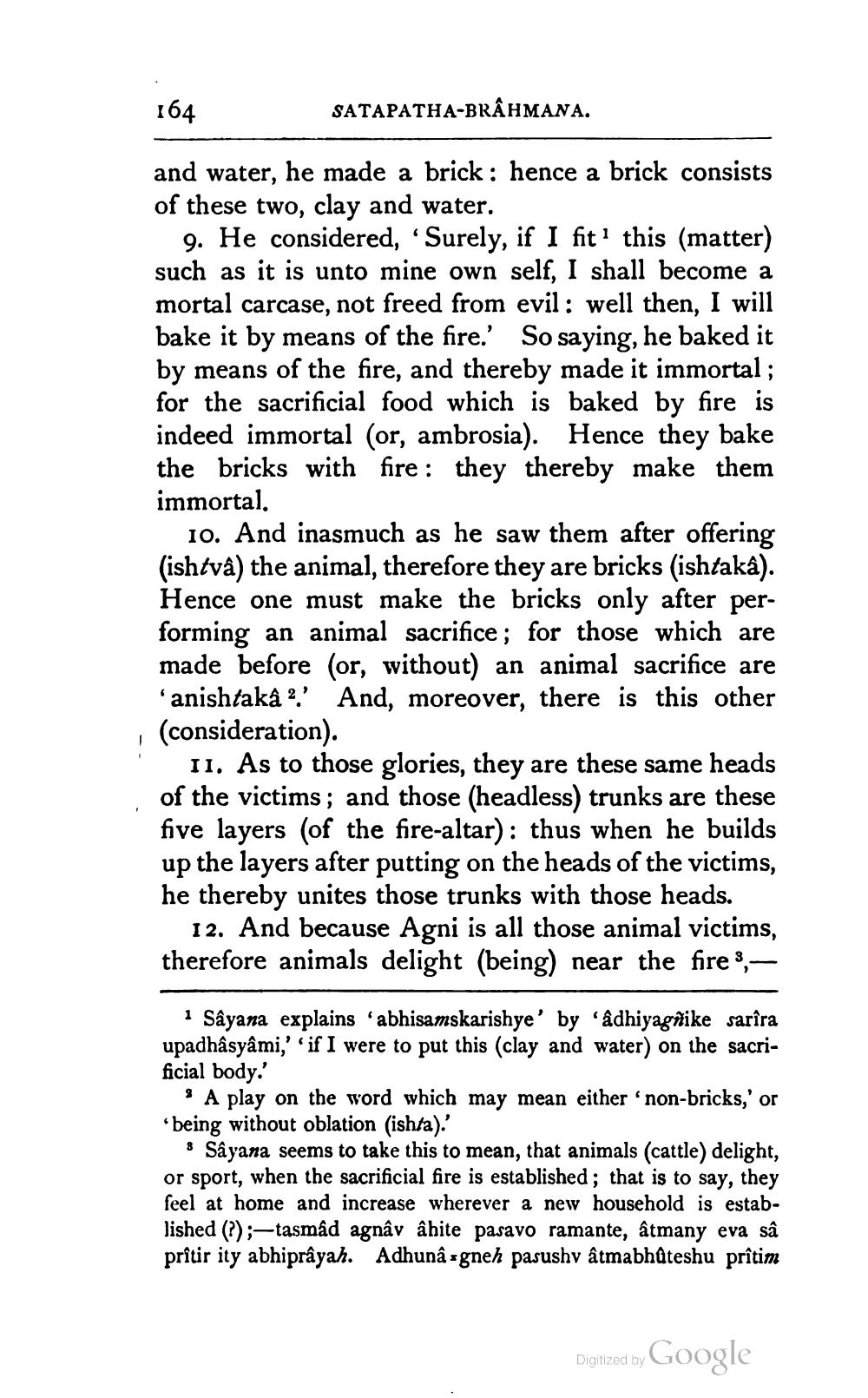________________
164
SATAPATHA-BRÂHMANA.
and water, he made a brick: hence a brick consists of these two, clay and water.
9. He considered, 'Surely, if I fit this (matter) such as it is unto mine own self, I shall become a mortal carcase, not freed from evil: well then, I will bake it by means of the fire.' So saying, he baked it by means of the fire, and thereby made it immortal ; for the sacrificial food which is baked by fire is indeed immortal (or, ambrosia). Hence they bake the bricks with fire: they thereby make them immortal.
10. And inasmuch as he saw them after offering (ishtvå) the animal, therefore they are bricks (ishtaka). Hence one must make the bricks only after performing an animal sacrifice; for those which are made before (or, without) an animal sacrifice are 'anishtaka ?' And, moreover, there is this other (consideration).
11. As to those glories, they are these same heads of the victims; and those (headless) trunks are these five layers (of the fire-altar) : thus when he builds up the layers after putting on the heads of the victims, he thereby unites those trunks with those heads.
12. And because Agni is all those animal victims, therefore animals delight (being) near the fire 3,
1 Sâyana explains abhisamskarishye' by 'âdhiyagrike sarîra upadhâsyâmi,'' if I were to put this (clay and water) on the sacrificial body'
: A play on the word which may mean either non-bricks,' or being without oblation (ishta).'
8 Sâyana seems to take this to mean, that animals (cattle) delight, or sport, when the sacrificial fire is established; that is to say, they feel at home and increase wherever a new household is established (?);-tasmad agnâv âhite pasavo ramante, âtmany eva sâ prstir ity abhiprâyah. Adhunâ sgneh pasushv atmabhūteshu prîtim
Digitized by Google




